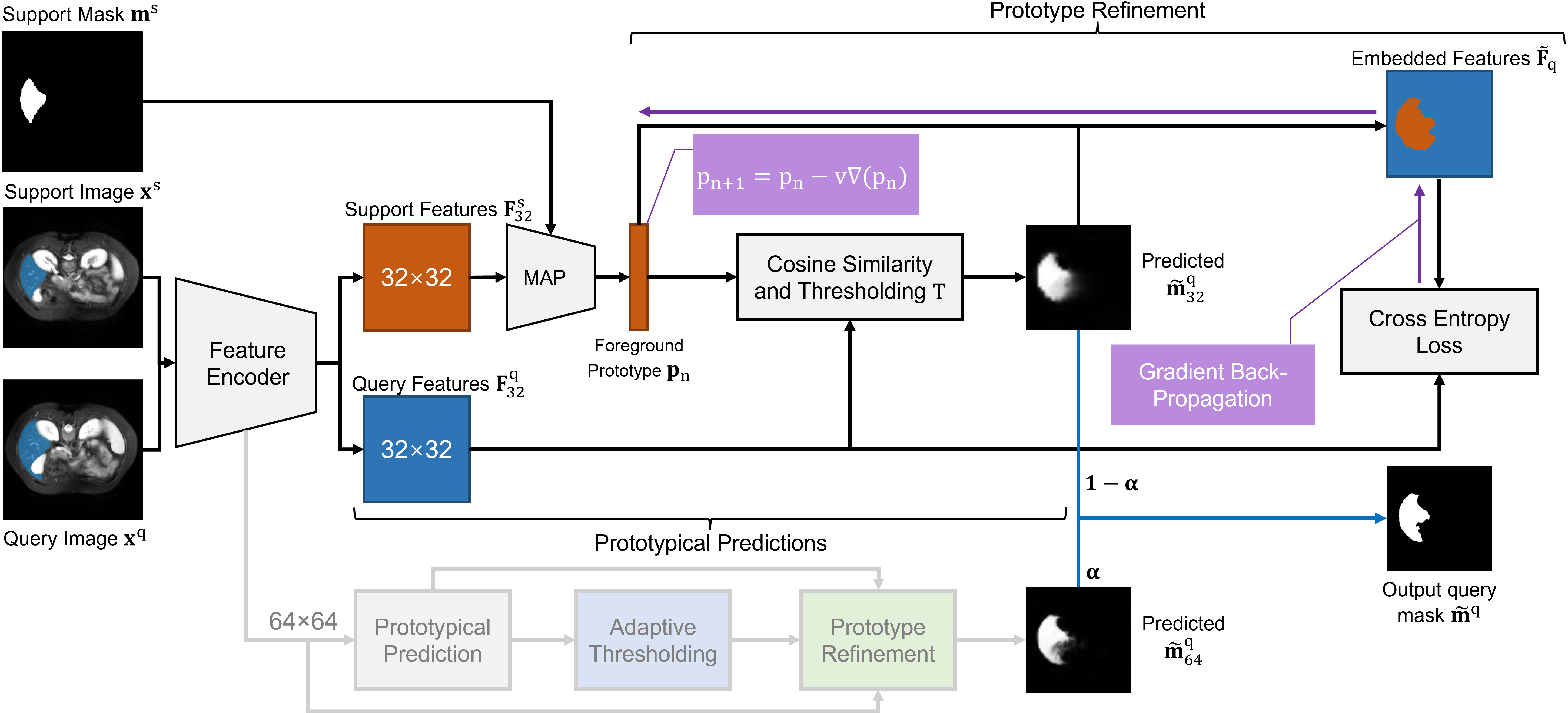Q-Net
Codes for the following paper:
Q-Net: Query-Informed Few-Shot Medical Image Segmentation
@article{shen2022qnet,
title={Q-Net: Query-Informed Few-Shot Medical Image Segmentation},
author={Shen, Qianqian and Li, Yanan and Jin, Jiyong and Liu, Bin},
journal={arXiv preprint arXiv:2208.11451},
year={2022}
}

Abstract
Deep learning has achieved tremendous success in computer vision, while medical image segmentation (MIS) remains a challenge, due to the scarcity of data annotations. Meta-learning techniques for few-shot segmentation (Meta-FSS) have been widely used to tackle this challenge, while they neglect possible distribution shifts between the query image and the support set. In contrast, an experienced clinician can perceive and address such shifts by borrowing information from the query image, then fine-tune or calibrate his (her) prior cognitive model accordingly. Inspired by this, we propose Q-Net, a Query-informed Meta-FSS approach, which mimics in spirit the learning mechanism of an expert clinician. We build Q-Net based on ADNet, a recently proposed anomaly detection-inspired method. Specifically, we add two query-informed computation modules into ADNet, namely a query-informed threshold adaptation module and a query-informed prototype refinement module. Combining them with a dual-path extension of the feature extraction module, Q-Net achieves state-of-the-art performance on two widely used datasets, which are composed of abdominal MR images and cardiac MR images, respectively. Our work sheds light on a novel way to improve Meta-FSS techniques by leveraging query information.
Dependencies
Please install following essential dependencies:
dcm2nii
json5==0.8.5
jupyter==1.0.0
nibabel==2.5.1
numpy==1.22.0
opencv-python==4.5.5.62
Pillow>=8.1.1
sacred==0.8.2
scikit-image==0.18.3
SimpleITK==1.2.3
torch==1.10.2
torchvision=0.11.2
tqdm==4.62.3Datasets and pre-processing
Download:
- Abdominal MRI Combined Healthy Abdominal Organ Segmentation dataset
- Cardiac MRI Multi-sequence Cardiac MRI Segmentation dataset (bSSFP fold)
Pre-processing is performed according to Ouyang et al. and we follow the procedure on their github repository.
We put the pre-processed images and their corresponding labels in ./data/CHAOST2/chaos_MR_T2_normalized folder for Abdominal MRI and ./data/CMR/cmr_MR_normalized folder for Cardiac MRI.
Supervoxel segmentation is performed according to Hansen et al. and we follow the procedure on their github repository.
We also put the package supervoxels in ./data, run our modified file ./data./supervoxels/generate_supervoxels.py to implement pseudolabel generation. The generated supervoxels for CHAOST2 and CMR datasets are put in ./data/CHAOST2/supervoxels_5000 folder and ./data/CMR/supervoxels_1000 folder, respectively.
Training
- Download pre-trained ResNet-101 weights vanilla version or deeplabv3 version and put your checkpoints folder, then replace the absolute path in the code
./models/encoder.py. - Run
bash scripts/train_<abd,cmr>_mr.sh
Note:
The alpha coefficient for dual-scale features in the code ./models/fewshot.py should be manually modified.
For setting 1, the alpha = [0.9, 0.1]
For setting 2, the alpha = [0.6, 0.4]
Testing
Run bash scripts/val.sh
Acknowledgement
This code is based on SSL-ALPNet (ECCV'20) by Ouyang et al. and ADNet by Hansen et al..